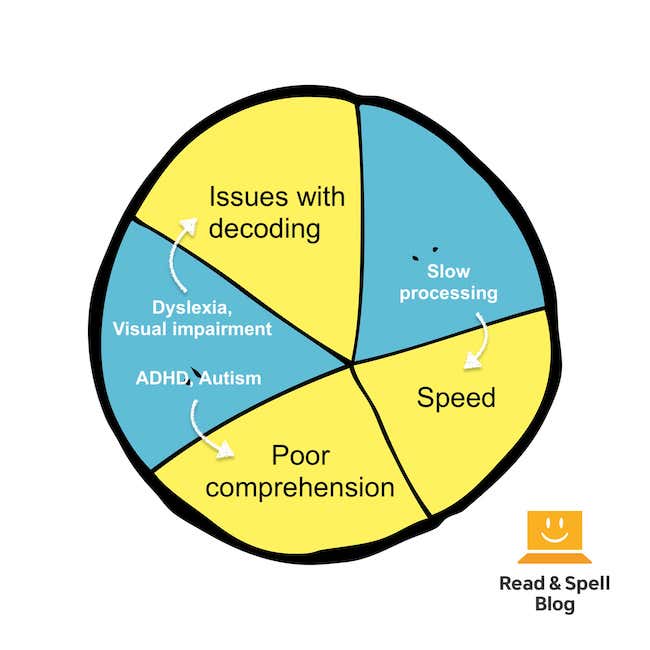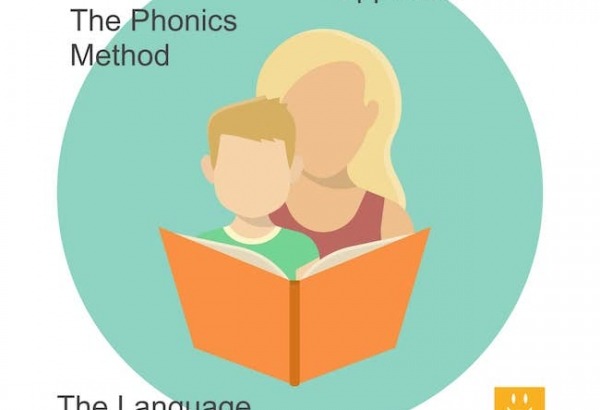3 Common reading problems for students

Developing strong reading skills in students is one of the key goals of every early education program. It is through reading that students expand their vocabulary and learn about the world. Reading is also the key to success in spelling and writing.
And while 6 and 7-year-olds are fluent speakers, they require instruction in how to navigate print. If a student is having problems with literacy skills, it can affect their performance across the school curriculum and have a negative impact on motivation to learn and self-esteem.
Sometimes there may be an undiagnosed learning difficulty to blame – as is the case for students who struggle with dyslexia or slow processing. In these situations parents and educators are tasked with understanding the root of the problem and providing children with appropriate coping strategies, to ensure they continue to progress and achieve reading milestones.
How reading works
Not every student acquires reading skills at the same rate. Reading begins with mastering pre-literacy skills, including learning the alphabet and enhancing phonemic awareness. This is followed closely by phonics instruction that teaches children how to map sounds to letters and sound out words.
As more terms become familiar to a beginner reader, the process speeds up via whole word recognition or sight-reading. This can be encouraged through direct instruction in high frequency vocabulary.
When students move into middle school, they will be asked to achieve greater feats of comprehension, which include understanding complex texts and processing more information in shorter amounts of time.
Being a fast and efficient reader is important for classroom based lessons, but also for satisfying homework requirements and performing well on standardized exams. Learn more about teaching children to read.
3 Common difficulties
- Issues with decoding
Also known as sounding out words, decoding is when children are able to put sounds to letters in order to sound out written language. It’s common for beginner readers to struggle when they meet new or unfamiliar terms, but typically decoding becomes easier with phonics instruction and repeated practice with reading out loud. If a child continues to struggle, there may be a specific learning difficulty present, or a physical impairment that is preventing them from physically seeing the letters or hearing the sounds in spoken language. Learn more in our posts on dyslexia and visual impairment in the classroom.
- Poor comprehension
There’s a lot going on in reading, from letter and word recognition to understanding meaning at the phrase, sentence, and paragraph level. When a beginner reader encounters vocabulary they do not know or do not recognize due to inaccurate decoding, they are likely to skip ahead. The more blanks in a line of text, the harder it is to make meaning and the more cognitively challenging and frustrating the reading task becomes. That’s why poor comprehension can result when a student struggles with decoding, has a limited vocabulary or attempts to read a text that is at too high of a level.
However, reading also requires being able to pay attention to narrative. Students need to identify gist, main ideas, and specific details and even make inferences about what they are reading. If a student has problems staying focused as a result of attention difficulties, it can affect comprehension.
- Speed
The more students read, the more they encounter unfamiliar terms. Quite often the context in which these new words are found gives children all of the clues they need to guess at the meaning. As students expand their vocabulary, they recognize more words by sight and reading speeds up. Students who continue to decode may benefit from overlearning sight words such as those on the Dolch List.
If speed is still an issue, there may be an underlying problem, such as slow processing. Reading is a cognitively demanding task and holding so much information in mind while continuing to process text can exhaust children with slow processing. Strategy instruction may help, but it’s important that these students be allowed extra time to complete tasks that require extensive reading.

Reading and spelling in English
English is full of silent letters and unexpected sounds. Often a student must simply memorize the spelling of a word in order to recognize its written form in the future. Mnemonic devices can be of assistance in this respect, as can repeatedly drilling vocabulary and taking a multi-sensory approach to learning.
The latter entails hearing a word read aloud, seeing it in its written form and even incorporating a tactile aspect, such as typing the word at the same time.
TIP: Did you know teaching kids touch typing skills can improve reading and spelling skills?
Another reason why English is not the easiest language for beginner readers is because of the lacking 1:1 correspondence in sounds to letters. In other words, there is more than one way to spell the same sound.
This can cause plenty of problems for English speaking children. Now imagine that English is not your native language and you may get a sense of how challenging it can be for bilingual ELL students, particularly when they have not yet mastered reading and writing in their native tongue.
Reading strategies that can help
Activate ideas
Help students activate their prior knowledge of a topic and take guesses about what they are about to read by analyzing pictures and titles or skimming a text to assess the main idea. You can also create mind maps as a prereading activity or put a few questions on the board and have the students start by discussing them in order to prepare for the reading.
Build vocabulary
The more words a student knows, the easier it will be to recognize them in reading. Teaching vocabulary is also helpful for spelling skills. Teachers can provide a glossary alongside a text or preteach key terms before the reading begins. As learning words in context provides additional depth in meaning, teachers might also consider providing instruction on contextual guessing.
Teach the Dolch List
Repeated exposure to high frequency terms that are common across children’s books and school worksheets can help children save their cognitive energy for decoding harder and less frequent vocabulary. Directly teaching these words using a program like Touch-type Read and Spell to reinforce them, can help kids read more quickly and efficiently.
Here are some more ideas on how to motivate students to read and improve their literacy skills.

Dyslexia, learning difficulties and touch-typing
Children who have a specific learning difficulty may fall behind their peers in literacy skills development. One of the most common reading problems teachers encounter is students who are struggling with dyslexia.
If an individual has a hard time hearing how sounds come together to make up words, they will inevitably struggle to sound out a word’s written form, or spell it correctly in writing.
Both children and adults who struggle with dyslexia can benefit from strategy instruction and “over-learning” in a multi-sensory way. You may also consider a program that helps learners build confidence and enhance reading by learning a secondary skill, such as typing.
Learn more about dyslexic students and how they can benefit from typing.
Do you know of any common reading problems we haven’t mentioned? Send us an email and join the discussion!
For learners who struggle with reading
TTRS is a phonics-based touch-typing program that strengthens decoding and sight reading skills for children and adults who struggle with reading.
Chris Freeman

close
Can an Orton-Gillingham approach to literacy help your child?
Take a short quiz to find out!
TTRS has a solution for you
An award-winning, multi-sensory course that teaches typing, reading and spelling

How does TTRS work?
Developed in line with language and education research
Teaches typing using a multi-sensory approach
The course is modular in design and easy to navigate
Includes school and personal interest subjects
Positive feedback and positive reinforcement
Reporting features help you monitor usage and progress













